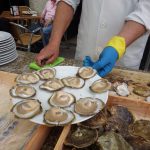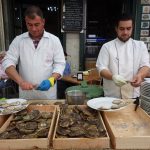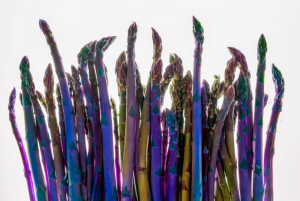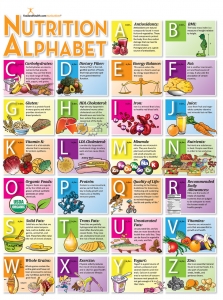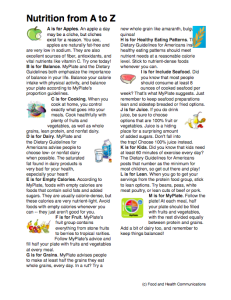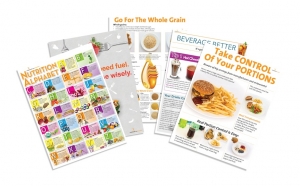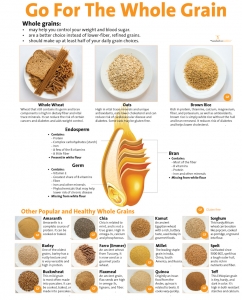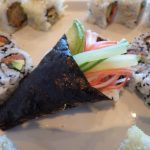 I had just posted the article on Sushi Safety when I saw a related scary report in the news about a California man with a tapeworm that they suspect he got from eating sushi. https://www.cbsnews.com/news/sushi-lover-pulled-5-foot-tapeworm-from-intestines/
I had just posted the article on Sushi Safety when I saw a related scary report in the news about a California man with a tapeworm that they suspect he got from eating sushi. https://www.cbsnews.com/news/sushi-lover-pulled-5-foot-tapeworm-from-intestines/
First you may ask, could this really happen?
Yes, it could. The tapeworm is a form of parasite that can enter the body in food and then continue to live and grow within the host. Yikes! Parasites are microorganisms that cannot grow outside a host but can live in food, water or soil waiting for a host to come along. While it does not happen frequently, there are several parasites that have been associated with seafood.
Some parasites are native to certain regions in the ocean and specific types of seafood and fish. There are also parasites that can be found in freshwater fish like pike, walleye and perch.
In research letter published just last year by the Centers for Disease Control and Prevention, researchers said there have been increased cases of a Japanese broad tapeworm (diphyllobothriosis) in wild pink salmon. They cautioned that this parasite has been found on the Pacific coast of North American and may pose a potential danger to those who eat these fish raw. Sources are chum, masu, pink and sockeye salmon.
A tapeworm like the man from California had can live inside a human for many years. Symptoms are abdominal discomfort, diarrhea and changes in appetite. The worm can actually absorb vitamin B12 from the person’s intestine and if it grows big enough it can block the bowel. The good news is that it can be destroyed with medication.
Another seafood related parasite is Anisakis simplex (roundworms). These can be found in fish, squid, cuttlefish and octopus. Symptoms that may occur after someone consumes this parasite include tingling in the throat, coughing up worms, stomach pain, vomiting and diarrhea. They can infect the stomach and intestine and must be removed by a medical professional.
How can you protect yourself from these parasites? Purchasing from a safe and inspected source and proper cooking are the two best things you can do. Cooking seafood to 145 degrees for at least 15 seconds, fishcakes to 155 degrees F and stuffed fish to 165 degree F can really reduce the risk. Salting, “cooking with lime” as in ceviche, marinating and cold smoking does NOT necessarily destroy parasites.
Restaurants selling raw or undercooked seafood are required to purchase their seafood products from approved sources that follow the appropriate methods of parasite destruction. Remember that this does not destroy any other bacteria or viruses that may be on the fish and careful handling is still very important. 
It is interesting to note that fish sold at grocery stores or fish markets are not required to have been previously frozen to destroy parasites. It is assumed that this fish will be properly cooked before it is eaten. Consumers wanting to prepare raw or undercooked seafood at home should ask questions at the fish market to determine if the fish is a species that is known for parasites and if so, has it been frozen for parasite destruction.
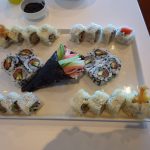 Buying “sushi grade” fish and thinking you’re safe? Think again. There are no regulations that define “sushi grade” fish. Your best bet is to ask lots of questions.
Buying “sushi grade” fish and thinking you’re safe? Think again. There are no regulations that define “sushi grade” fish. Your best bet is to ask lots of questions.
Not following good food safety recommendations regarding parasites can be risky —especially for children, the elderly, the immune suppressed and pregnant women who often have weaker immune systems.
Cheryle Jones Syracuse, MS
Professor Emeritus, The Ohio State University
Sources:
Tapeworm Larvae in Salmon from North America Kuchta, R., Oros, M., Ferguson, J., & Scholz, T. (2017). Diphyllobothrium nihonkaiense Tapeworm Larvae in Salmon from North America. Emerging Infectious Diseases https://wwwnc.cdc.gov/eid/article/23/2/16-1026_article
Seafood Health Facts: Making Smart Choices, National Sea Grant Program https://www.seafoodhealthfacts.org/seafood-safety/general-information-healthcare-professionals/seafood-safety-topics/parasites
Bad Bug Book, The United States Food and Drug Administration. https://www.fda.gov/downloads/food/foodborneillnesscontaminants/ucm297627.pdf



